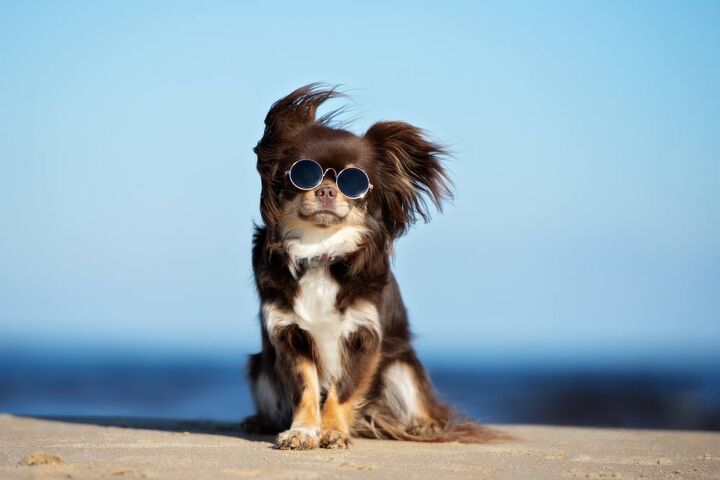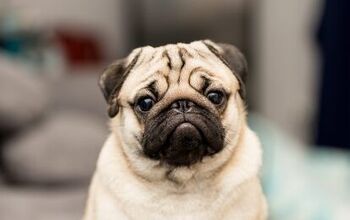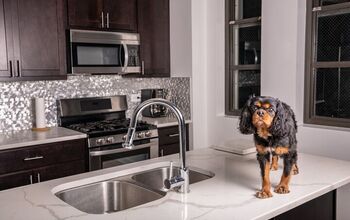Top 10 Dog Breeds for Hot Weather

It’s getting hot out there, and some dog breeds do better then others in the heat. Here’s our top 10 dog breeds for hot weather.
Before we take a look at which breeds of dog seem to absolutely thrive in super hot weather, it’s important to recognize that there are still a number of basic needs that all pooches require – regardless of how well they seem to tolerate the heat.
For starters, let’s be clear that dogs of every size, age, and breed, require plenty of fresh, cold water and access to shelter from the sun and humidity on hot days. In fact, the life-threatening dangers posed to humans by excessive exposure to heat and sun are exactly the same for dogs. That’s why you’ll find that sites like Amazon, Chewy, PetSmart, and so many others, now carry such a wide range of products designed to provide relief to your pet. Special sun-blocks help defray damaging UV rays, tinted sunglasses or goggles can reduce glare on your pooch’s peepers, collapsible water bowls, and even cooling vests and kerchiefs help safeguard our best buddies from heatstroke during walks or runs.
Regardless of climbing temperatures, short outings still need to happen, and there’s no reason to not be properly equipped before you head out.
Related: Hot Tips on Sun Protection for Dogs
But as our title implies, there are some breeds that tend to hold up a little better than others when the heat is on. They typically hale from hot-weather regions and they tend to possess physical characteristics that have evolved over time and help them cope with higher temperatures.
Some of these are self-evident and include shorter coats that allow airflow to naturally cool the entire body. The dog is often leaner than many of the sturdier breeds, and a thinner, single-coat is common. You’ll also notice that they will typically be a lighter color which bodes well when deflecting sunlight.
From a physical standpoint, these dogs tend to have a longer beak (you won’t find the flat-faced, brachycephalic type of dog), as well as larger, upright ears that help prevent a build-up of heat or moisture. In fact, the erect ear can also help catch a cooling breeze on a hot day.
So, let’s take a look at 10 of the top heat-loving breeds of dog. Some might just surprise you.
1. Basenji
This handsome boy with the ultra-thin coat, perky ears, and tightly curled tail originated in the African Congo where temperatures typically hover around 90-degrees and the region remains swelteringly hot and humid throughout the year. While he was bred to accompany local tribespeople into the jungles to hunt small game, this self-assured little dog eventually made his way into the hearts of North American families and in 1944, was registered by the American Kennel Club. Now, you have to realize that any dog that can run, chase, and track prey in a hot jungle environment is going to be rather tenacious if not downright stubborn. And because that can make training a challenge, only experienced dog owners should consider this pooch. (Photo credit: Masarik/Shutterstock)
2. Dalmatian
Now this super-energized pooch with that iconic spotting, calls the Dalmatia region of Croatia home. And while he’s typically associated with fire halls – where he ran alongside horse-drawn fire-trucks – he is also known to have roamed with gypsy caravans as they traversed the 80- to 90-degree temperatures of Croatia into Europe. So, hot weather, long treks, and none of today’s creature comforts make it a safe bet that this pooch was built to not only survive but to thrive in warmer temperatures. That said, this silky, single-coated breed has a genetic disposition to urinary tract issues making constant access to plenty of drinking water – regardless of temperatures – an absolute must. Named to the American Kennel Club back in 1888, he’s lost none of his enthusiasm for warm-weather activities. (Photo credit: patostudio/Shutterstock)
3. Weimaraner
Talk about ticking all the boxes, this pooch not only enjoys the super short hair that’s ideal for taking in warm-weather activities, but he’s also single-coated and has a longer, leaner physique that helps keep his core cool on hot days. But in addition to his ability to stay cool, he looks pretty cool too. His soft, silver-gray coat and pale blue eyes have earned him the nick-name Gray Ghost. And his history is almost as fascinating as this moniker. Bred in 1800s Germany to hunt big-game including bears and wolves, this athletic pooch ultimately evolved into a stellar hunting dog that made the American Kennel Club’s coveted registry in 1943. No surprise that regardless of the temperature, his need for, and tolerance of, strenuous exercise is pretty high. (Photo credit: svetastar/Shutterstock)
4. Afghan Hound
This one will probably surprise you. Although his name makes it fairly evident that this ancient breed of sight-hound is a native of Afghanistan and likely accustomed to extreme heat, the length of his hair may have thrown you off a bit. In fact, you might think this much fur would have him hankering for the a/c on a hot day. But you’d be wrong. In fact, this 4,000- year old breed of hunter has a single-coat that means those tresses that protect him in harsh weather conditions, are light enough to allow air-flow and actually keep him nice and cool. Registered with the American Kennel Club in 1927, this loyal, sensitive, and sometimes aloof dog is a great family pet – for someone who’s ready to take on the grooming. (Photo credit: WildStrawberry/Shutterstock)
5. Doberman Pinscher
Another large pooch that fairs well in warmer weather (in spite of having a darker coat) is the Dobie. His long, lanky body, super-short fur, and single- coat make his ability to cool down on a hot day or following a rigorous exercise session, a relatively efficient process. This elegant looking working dog was bred around the turn of the last century to be a guard dog and while his intimidating façade has never changed, his purpose and personality have evolved to make him a favorite family pet. When properly socialized, he’s devoted and loving to his owner – and even friendly with other animals. In fact, when he was registered with the American Kennel Club back in 1908, he was described as being loyal, fearless, and alert. (Photo credit: Markus Bieck/Shutterstock)
6. Ibizan Hound
He’s a rather unique looking dog, isn’t he? With a lithe body, extra long legs, almond-shaped eyes, and those over-sized, upright ears, you might think he resembled something like the markings found in Egyptian crypts – and you’d be right. In fact, this breed dates back almost 3,000 years, to when traders first brought Egyptian hounds to these Mediterranean islands to hunt rabbit along the sweltering, craggy coastlines. While today’s version is an affectionate, loving family pet, the physical characteristics from his early days are unmistakable. So, it should come as no surprise that with those long legs, he can jump 5 to 6 feet from a standing position. A more recent inductee into the American Kennel Club’s coveted registry (1978), he’s actually described as being family-oriented, even-tempered, and even polite. (Photo credit: Kuznetsov Alexey/Shutterstock)
7. Rat Terrier
While his name sure doesn’t sugar-coat his purpose in life, it does under-estimate his popularity as a loving family pet. Truth is, the compact Rat Terrier was bred specifically to hunt rats in rural areas and worked non-stop in tight, stuffy quarters with minimal air movement. So, how does this type of working dog beat the heat? Let’s start with those massive, upright ears that can not only capture a cooling breeze but release body heat. Then there’s his smaller size and lean build that prevent body heat from building up in his core, and his short, single-coat that allows him to air-cool. Inducted into the American Kennel Club in 2013, no surprise that this affectionate pooch can be determined, which means a professional trainer may be in your future. (Photo credit: Annette Shaff/Shutterstock)
8. Australian Kelpie
Another unexpected entry is this double-coated mix. He’s known to be a Collie dog from Scotland that has been crossed with – rumor has it – a wild Dingo from Australia. Yes, this dog was developed to withstand the extreme heat and harsh conditions of rural Australia with the ideal being a working dog that could herd sheep without supervision, in both open or enclosed settings. Now, while this handsome boy with the upright ears, eager-to-please personality, and boundless energy never got the nod from the American Kennel Club, he is a recognized breed in both Canada and the United Kingdom. As a family dog, you can expect him to be a willful handful that needs a job to do and can become destructive if bored. (Photo credit: Lisjatina/Shutterstock)
9. Whippet
Just like his larger cousin – the Italian Greyhound – the sleek little Whippet is known for his speed and prowess with the dog racing crowd. So, how does this stream-lined canine deal with the heat? It’s all down to body structure. That and a gentle personality are what make him super-chill and ideal for families that live in warm weather climates. With his slight, lean physique, excess fat isn’t trapping heat around his body’s core. Long, lanky legs and fine, short hair allow air to move freely around his body, while those large, upright ears help to not only cool him down but continually release body heat. Recognized by the American Kennel Club way back in 1888, he’s described as affectionate, playful, and calm. And fast. Don’t forget fast! (Photo credit: Bianca Grueneberg/Shutterstock)
10. Chihuahua
Last, but never least is this quintessential Mexican mini-mutt – the Chihuahua. While this pooch may be one hot little tamale, he actually has a number of factors working in his favor when it comes to keeping his cool. Let’s start with his diminutive size. Smaller dogs have less body mass and more skin surface. What this translates into is a more efficient means of releasing body heat and preventing it from building in the core. His fine, thin coat allows circulating air to cool him down, and like most other heat-tolerant breeds, he has those larger, perky ears that help prevent a build-up of heat. Now, this devoted little dog was recognized by the American Kennel Club over a century ago – in 1904 – and at that time they concluded he was charming, graceful, and sassy. They didn’t say “cool”, but that’s a given, right? (Photo credit: otsphoto/Shutterstock)
Dogs to Avoid
If you know that you are going to spend significant time outdoors in the hot summer sun, there are some breeds that you may want to avoid. These dogs thrive in colder temperatures and can overheat very easily when the temperatures climb.
This list includes a lot of northern dogs that were bred and raised to live in the snow and ice of the arctic. It also includes brachycephalic dogs (short-snouted dogs). The shape of their short, pushed-in noses makes it more difficult for them to breathe effectively. With less air moving in and out of the lungs, they are unable to cool themselves down in the way that most dogs do through panting.
It’s not to say that these dogs can’t survive living in warmer climate areas. But they are going to be more comfortable indoors in an air-conditioned room than spending time outdoors basking in the sun.
· Alaskan Malamute
· Siberian Husky
· American Eskimo Dog
· Chow Chow
· Akita Inu
· Samoyed
· Pug
· English Bulldog
· French Bulldog
· Boston Terrier
· Boxer
· Pomeranian
· Pekingese
· Shih Tzu
· Cavalier King Charles Spaniel
If you do own one of these breeds and are planning to spend some time outdoors, make sure to take extra precautions. Keep your dog comfortably in the shade, enforce regular breaks to cool off, and provide plenty of cool, fresh water.
What Should I Do If My Dog is Overheated?
Regardless of your dog’s breed, you may find yourself in a situation where the heat is too much for him. Whether your air conditioner has failed, or you spent too much time outdoors in the backyard, overheating can lead to serious health problems if it isn’t addressed quickly.
Signs that your dog may be overheating include:
· Excessive panting or difficulty breathing
· Drooling
· Retching or vomiting
· Changes in gum or tongue color to a bright or dark red
· Increased body temperature
· Racing heart rate
· Excessive thirst and urination
· Disorientation or confusion
· Weakness
· Lethargy
· Stumbling or difficulty walking
· Seizures
· Loss of consciousness
If you notice any of these signs, you need to act quickly. Move your dog out of the sun, preferably into an air-conditioned room if possible.
Wet clothes or towels with cool water and place them around his neck, in his armpits, or in the groin area. You can also wet his paws or ears with cool water. But be careful not to cool him down too quickly. Use cool water, not cold, to avoid sending his body into shock.
Offer your dog cool, fresh water. If he’s willing to drink, allow him to do so, but don’t force it.
Regardless of how bad the overheating may be, it’s always a good idea to contact your veterinarian to discuss the situation. Heatstroke and heat exhaustion can be very serious, even life-threatening. Call ahead to make an appointment for him to be examined. They will be able to check to ensure that there are no serious health complications.
If your dog experiences any more serious signs, like disorientation, seizures, or loss of consciousness, take him to the nearest emergency clinic as soon as possible.

Sharing space with three seriously judgy Schnoodles and a feline who prefers to be left alone. #LivingMyBestLife
More by Mary Simpson

































